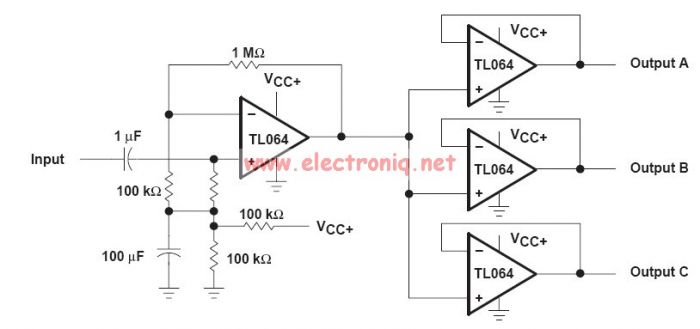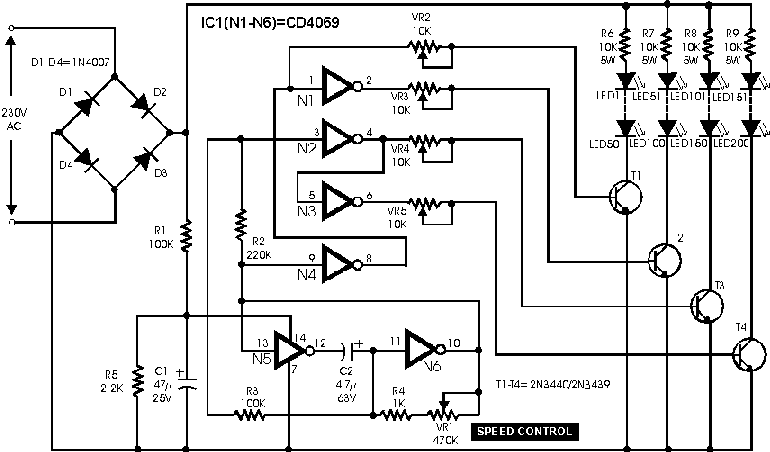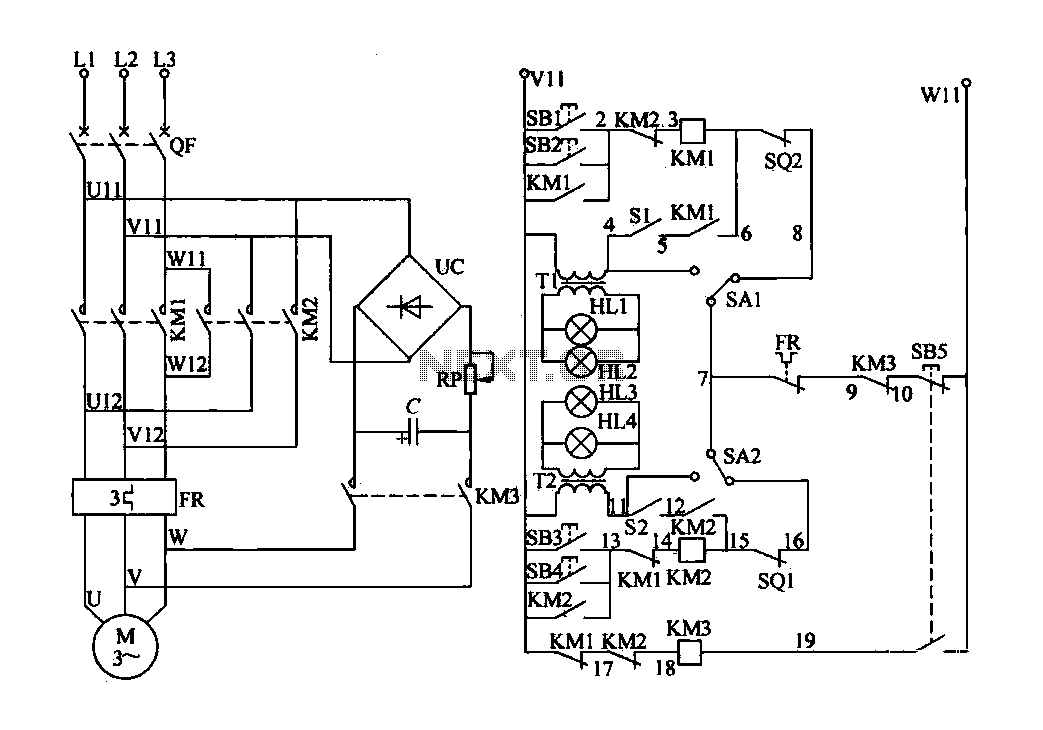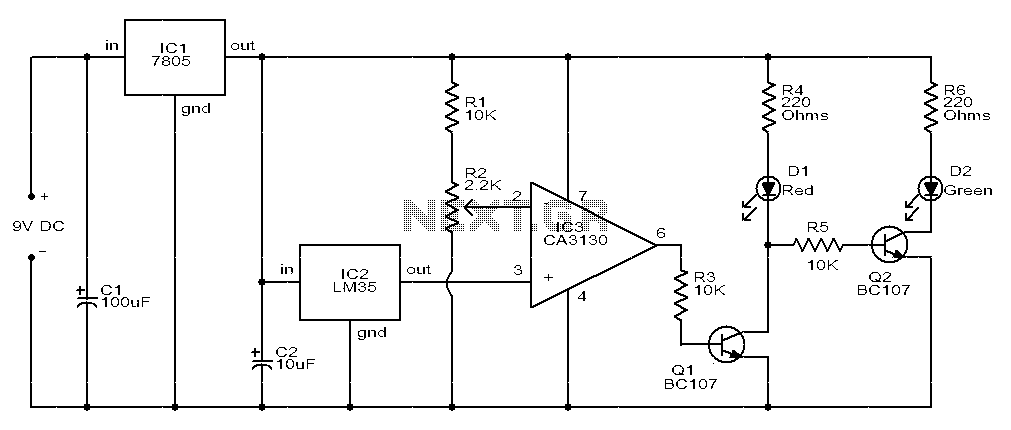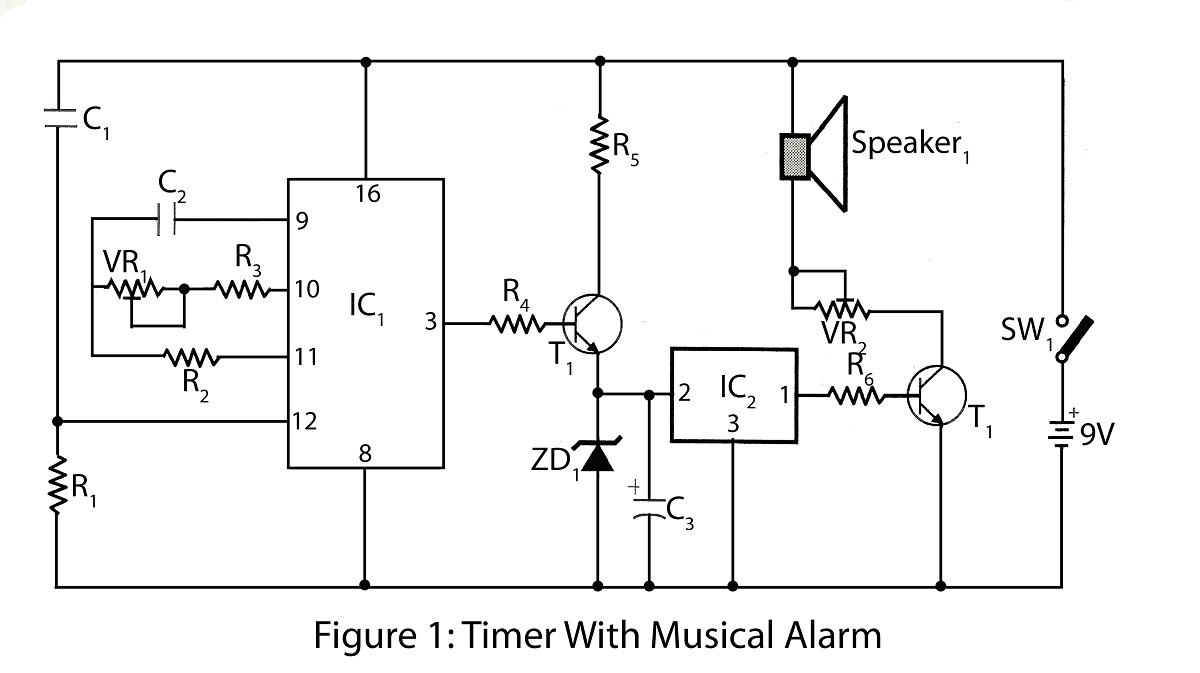
An Expandable Multi-Zone Modular Burglar Alarm circuit
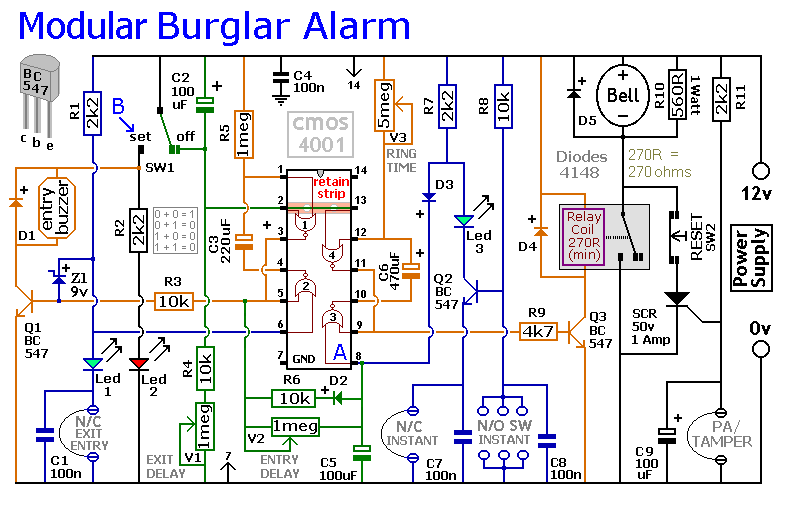
This circuit includes automatic exit and entry delays, as well as a timed bell cut-off feature. It supports both normally-closed and normally-open contacts, and incorporates a 24-hour personal attack/tamper zone. The use of expansion modules allows for the addition of multiple zones, which may include some or all of the inertia (shock) sensor type.
The described circuit is designed to enhance security systems by providing a structured approach to alarm management. The automatic exit and entry delays are crucial for allowing users to enter or exit a secured area without triggering an alarm immediately. This feature is particularly useful in residential and commercial security applications where users may need a brief period to deactivate the system upon entry or activate it upon exit.
The timed bell cut-off feature serves to limit the duration of alarm sounds, thereby preventing unnecessary disturbances. This is particularly important in environments where false alarms may occur, as it reduces the likelihood of alarm fatigue among residents or occupants.
Support for both normally-closed and normally-open contacts enhances the circuit's versatility, allowing it to be compatible with a wide range of sensors and devices. Normally-closed contacts are typically used in security applications to detect circuit interruptions, while normally-open contacts can be used for various triggering mechanisms.
The inclusion of a 24-hour personal attack/tamper zone is a significant feature for personal safety. This zone remains active at all times, providing immediate response capabilities in the event of a tampering incident or personal attack, thereby enhancing the overall security of the system.
The ability to integrate expansion modules is a key advantage of this circuit design. This modularity allows for scalability, enabling users to customize their security system according to specific needs. Additional zones can be added seamlessly, accommodating various sensor types, including inertia or shock sensors that detect physical disturbances. This flexibility makes the system suitable for a wide range of applications, from residential properties to commercial establishments, ensuring comprehensive coverage and enhanced security measures.This circuit features automatic Exit and Entry delays and a timed Bell Cut-off. It has provision for both normally-closed and normally-open contacts, and a 24-hour Personal Attack/Tamper zone. By using the Expansion Modules, you can add as many zones as you require; some or all of which may be the inertia (shock) sensor type..
🔗 External reference
The described circuit is designed to enhance security systems by providing a structured approach to alarm management. The automatic exit and entry delays are crucial for allowing users to enter or exit a secured area without triggering an alarm immediately. This feature is particularly useful in residential and commercial security applications where users may need a brief period to deactivate the system upon entry or activate it upon exit.
The timed bell cut-off feature serves to limit the duration of alarm sounds, thereby preventing unnecessary disturbances. This is particularly important in environments where false alarms may occur, as it reduces the likelihood of alarm fatigue among residents or occupants.
Support for both normally-closed and normally-open contacts enhances the circuit's versatility, allowing it to be compatible with a wide range of sensors and devices. Normally-closed contacts are typically used in security applications to detect circuit interruptions, while normally-open contacts can be used for various triggering mechanisms.
The inclusion of a 24-hour personal attack/tamper zone is a significant feature for personal safety. This zone remains active at all times, providing immediate response capabilities in the event of a tampering incident or personal attack, thereby enhancing the overall security of the system.
The ability to integrate expansion modules is a key advantage of this circuit design. This modularity allows for scalability, enabling users to customize their security system according to specific needs. Additional zones can be added seamlessly, accommodating various sensor types, including inertia or shock sensors that detect physical disturbances. This flexibility makes the system suitable for a wide range of applications, from residential properties to commercial establishments, ensuring comprehensive coverage and enhanced security measures.This circuit features automatic Exit and Entry delays and a timed Bell Cut-off. It has provision for both normally-closed and normally-open contacts, and a 24-hour Personal Attack/Tamper zone. By using the Expansion Modules, you can add as many zones as you require; some or all of which may be the inertia (shock) sensor type..
🔗 External reference

